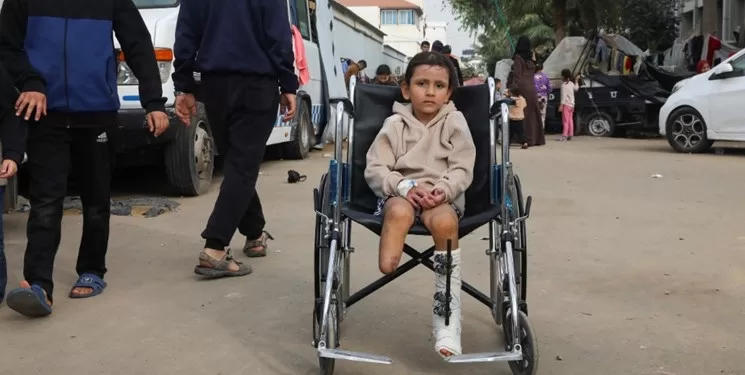
According to a charity, since October 7, more than ten children in Gaza have lost one or both of their legs on average every day. Many of these amputations were done without anaesthesia, highlighting the terrible humanitarian situation in the Palestinian enclave after more than three months of Israeli bombardment.
Jason Lee, the head of Save the Children in the occupied Palestinian territories, stated in a statement that the “suffering of children in this conflict is unimaginable and even more because it is preventable and needless,” the UN stated in its statistics.
He declared, “Child killing and maiming is abhorred as a serious violation against children, and those who commit these crimes must be held accountable.”
Save the Children cited statements made by UNICEF spokesperson James Elder on December 19, upon his return from Gaza, indicating that about 1,000 children have lost one or both of their legs since October 7, the day when Hamas began its onslaught on Israel and the conflict began.
The organisation also referenced a World Health Organisation statement, which stated that because of the acute lack of essential supplies and medical equipment in Gaza, many of these kid surgeries were performed without anaesthesia.
When toddlers are brought in with explosion wounds, Lee claimed to have witnessed “doctors and nurses completely overwhelmed.”
“Even seasoned professionals cannot handle the impact of seeing children in such pain and not having the tools or medications to treat them or lessen their suffering,” he stated.
The charity claims that because children are more sensitive to injury and more fragile than adults, they are almost seven times more likely to die from blast injuries.
Lee called for a “definitive ceasefire” to facilitate the passage of humanitarian goods and medical supplies.”A blast is more likely to rip off organs in their belly, even when they are fully grown because their heads are still not fully formed and their underdeveloped muscles provide less protection. there is no visible damage,” Lee added.

The Israel Defence Forces (IDF) have said time and time again that Hamas exploits civilian infrastructure—including hospitals—as a shield to strike Israel and that they are not targeting people.
The Palestinian Ministry of Health in Gaza, which is controlled by Hamas, reported on Sunday that since October 7, at least 22,835 Palestinians have died and 58,416 others have been injured in Gaza.
is unable to independently confirm the figures that the government has given.
Israel’s attack on Hamas has forced over 90% of Gaza’s population of over two million to flee their homes, according to the United Nations Relief and Works Agency.
“Deadly cycle”
In addition, the UN Children’s Agency has alerted youngsters in Gaza to the triple threat of sickness and malnourishment in addition to the ongoing fighting.
According to UNICEF, there has been an almost 2,000% rise in diarrhoea cases among children under the age of five since the conflict.
According to the organisation, “the notable rise in cases in such a short period is a strong indication that child health in the Gaza Strip is fast deteriorating.”
Moreover, it stated that 90% of children under the age of two now experience “severe food poverty,” an increase from 80% just two weeks prior.
UNICEF cautioned that “malnutrition and disease combined and left untreated create a deadly cycle,” noting that displaced households are dealing with unsanitary circumstances and lack of access to plumbing and potable water.
The senior UN humanitarian aid officer, Martin Griffiths, issued a warning last Friday, saying that the “highest levels of food insecurity ever recorded” in Gaza meant that famine was “around the corner.”
As infectious illnesses proliferate in congested shelters and sewers overflow, Griffiths stated in the UN Office for the Coordination of Humanitarian Affairs assessment that a public health catastrophe is developing.
He continued, saying that 180 Palestinian women “are giving birth daily amidst this chaos.”
“Gaza is just no longer livable. While the rest of the world looks on, its citizens face daily risks to their own lives, according to Griffiths.
